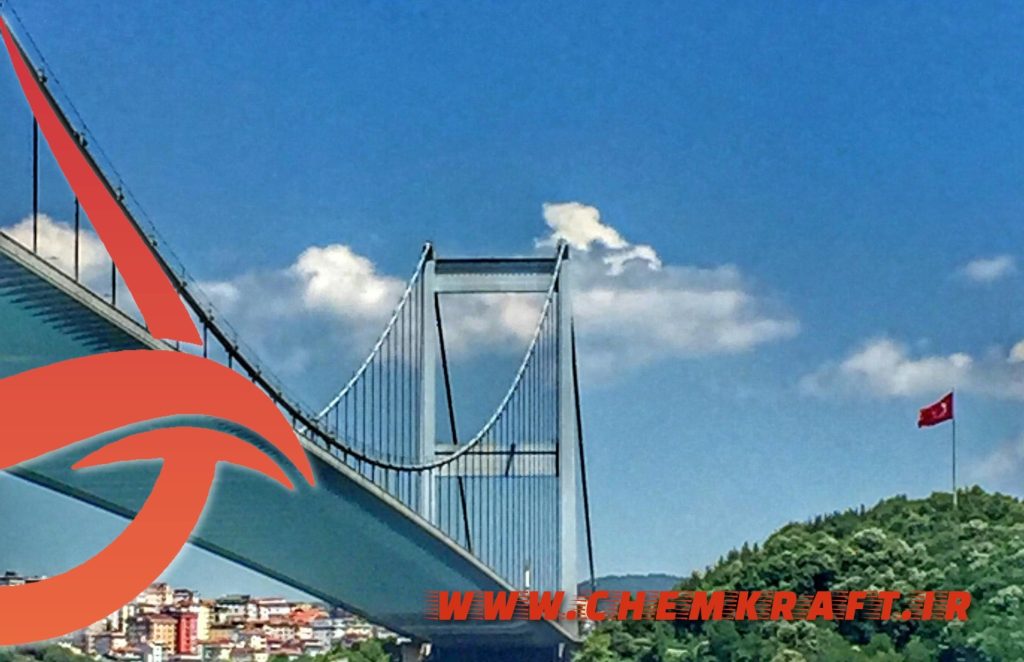1. Introduction to caustic soda in the textile industry
Caustic soda, also known as sodium hydroxide (NaOH), plays a vital role in various manufacturing processes, including the production of textile dyes and pigments. Its versatile nature and unique chemical properties make it an essential component in achieving desirable coloration and fixation of dyes on textile materials. This article delves into the examination of how caustic soda is employed in the textile industry, unraveling its significance in textile dyeing and pigment manufacturing. By understanding the role of caustic soda and exploring its processes, we can gain insights into the complex world of textile production and its environmental implications. Moreover, this article highlights key advancements and future prospects for the use of caustic soda, paving the way for sustainable and innovative textile manufacturing practices.
1. Introduction to caustic soda in the textile industry
1.1 The importance of caustic soda in textile manufacturing
Caustic soda may sound like the name of a supervillain, but in reality, it plays a crucial role in the textile industry. This versatile chemical, officially known as sodium hydroxide, is used in various stages of textile manufacturing, including dyeing and pigment preparation. Its caustic nature and exceptional chemical properties make it an essential ingredient in the textile world.
1.2 Historical background of caustic soda usage in textiles
Let’s take a trip back in time (cue the flashback music) to explore the historical background of caustic soda usage in textiles. The origins trace back to ancient civilizations, where artisans discovered the power of alkali materials in dyeing processes. Fast forward to today, and caustic soda remains an indispensable companion in textile manufacturing, adding color and vibrancy to our favorite fabrics.
2. Understanding the role of caustic soda in textile dyeing and pigment manufacturing
2.1 The chemical properties and composition of caustic soda
Before we dive into the colorful world of textile dyeing and pigment manufacturing, let’s get acquainted with caustic soda’s chemical properties. Made up of sodium (Na), hydrogen (H), and oxygen (O), this compound is a powerhouse of alkali goodness. Its high alkalinity and ability to break down stubborn substances make it the perfect assistant for achieving vibrant and long-lasting colors in fabrics.
2.2 How caustic soda facilitates textile dyeing and pigment preparation
Picture this: you have a plain white t-shirt that needs an injection of color. This is where caustic soda steps in, armed with its magical abilities. By adjusting the pH levels and opening up the fiber structure, caustic soda prepares the fabric to absorb dyes. It’s like the welcoming committee for all those beautiful pigments, ensuring they adhere to the fabric like glue (minus the stickiness, of course).
3. The chemical properties and characteristics of caustic soda
3.1 Composition and structure of caustic soda
Time for a chemistry lesson that won’t put you to sleep! Caustic soda is chemically composed of sodium ions (Na+) and hydroxide ions (OH-). These ions team up in a crystal lattice structure, forming a solid white substance that resembles flakes or pellets. So, the next time you come across these unassuming white warriors, remember their true power lies within.
3.2 Chemical reactions and reactions with textile dyes and pigments
Chemical reactions can be both entertaining and magical, just like a circus show. Caustic soda takes center stage in these reactions, interacting with textile dyes and pigments to create a dazzling display of colors. Its alkaline nature helps in breaking down stubborn substances and enhancing the dye’s ability to bond with the fabric, resulting in vibrant, fade-resistant hues that you can’t help but admire.
4. Exploring the processes involved in textile dyeing with caustic soda
4.1 Pre-treatment processes using caustic soda in textile dyeing
Before the dyeing extravaganza commences, textiles undergo a pre-treatment process that sets the stage for color transformation. Caustic soda plays a crucial role by removing impurities and ensuring the fabric is ready to soak up those dyes. It’s like giving the fabric a spa treatment, making it more receptive to vibrant hues and ensuring a flawless dyeing process.
4.2 Dyeing techniques utilizing caustic soda
Now onto the main event: the dyeing techniques that bring fabrics to life. Caustic soda plays a vital role in various dyeing methods, such as tie-dye, dip-dye, and even the age-old art of batik. By adjusting the pH levels and assisting in the dye penetration, caustic soda ensures that the colors stay true and vibrant. So, the next time you sport a tie-dye shirt, remember to give credit to caustic soda for its colorful contribution.
And there you have it, a journey through the world of caustic soda in textile manufacturing. Who knew this unassuming compound could be such a hero in the quest for vibrant colors and stylish fabrics? So, let’s raise a glass (or a dye-dipped fabric) to caustic soda, the unsung champion of the textile industry!
5. Utilizing caustic soda for pigment preparation in textile manufacturing
5.1 Introduction to pigment preparation techniques
When it comes to adding color to textiles, pigment preparation is a crucial step in the manufacturing process. Pigments are responsible for the vibrant hues and shades that make fabrics visually appealing. But how exactly are these pigments prepared?
In textile manufacturing, pigment preparation techniques involve dispersing and fixing pigments onto the textile fibers. This ensures that the colors remain vivid and long-lasting, even after repeated washes. Various chemicals and substances are used in this process, and one of the key players is caustic soda.
5.2 The role of caustic soda in pigment dispersion and fixation
Caustic soda, also known as sodium hydroxide, plays a vital role in pigment dispersion and fixation. It acts as a dispersing agent, helping the pigments to evenly spread throughout the textile fibers. This ensures that the colors are distributed uniformly and prevent any clumping or unevenness.
Furthermore, caustic soda also assists in fixing the pigments onto the fibers. This step is essential to ensure that the colors do not fade or wash out easily. By using caustic soda, manufacturers can enhance the colorfastness of the textiles, making them more resistant to fading and maintaining their vibrancy over time.
Caustic soda’s ability to disperse and fix pigments not only contributes to the overall quality of the textile but also helps to improve the durability and longevity of the colors. This means that your favorite bright red shirt will retain its vividness even after countless trips through the washing machine.
6. Environmental considerations and challenges in caustic soda usage
6.1 Potential environmental impacts of caustic soda in textile manufacturing
While caustic soda plays a valuable role in textile manufacturing, it’s important to consider its potential environmental impacts. Caustic soda is a highly alkaline substance and can have adverse effects if not handled and disposed of properly.
Improper disposal of caustic soda wastewater can lead to contamination of water bodies, affecting aquatic life and ecosystems. Additionally, the production of caustic soda involves energy-intensive processes, which contribute to carbon emissions and climate change.
6.2 Sustainable alternatives and practices for caustic soda usage
To address these environmental concerns, the textile industry is exploring sustainable alternatives and practices for caustic soda usage. One approach is to optimize the dosage of caustic soda, reducing the amount used while still maintaining the desired pigment dispersion and fixation.
Moreover, recycling and treating caustic soda wastewater can help minimize its environmental impact. Technologies such as membrane filtration and reverse osmosis enable the reuse of wastewater, reducing water consumption and preventing pollution.
By adopting sustainable alternatives and practices, textile manufacturers can mitigate the environmental footprint associated with caustic soda usage, while still achieving high-quality pigmentation in their products.
7. Innovations and advancements in caustic soda application for sustainable textile production
7.1 New technologies and processes minimizing caustic soda consumption
The textile industry is continuously evolving, and so are the technologies and processes used in caustic soda application. New advancements focus on minimizing caustic soda consumption without compromising the quality of pigment dispersion and fixation.
Innovative techniques, such as microencapsulation, allow for better control and targeted release of pigments, reducing the reliance on excessive caustic soda usage. This not only saves costs but also minimizes the environmental impact associated with its production and disposal.
7.2 Sustainable initiatives and research in caustic soda usage
Sustainable initiatives and ongoing research further contribute to the advancement of caustic soda usage in the textile industry. Collaborations between textile manufacturers, chemical suppliers, and environmental organizations aim to develop greener alternatives and more efficient processes.
Efforts are being made to create caustic soda from renewable resources and explore eco-friendly substitutes. Furthermore, continuous monitoring and improvement of waste management systems ensure that caustic soda is handled responsibly throughout its lifecycle.
By embracing these innovations and sustainable initiatives, the textile industry can move towards a more environmentally friendly and socially responsible approach to caustic soda usage.
8. Conclusion: The future outlook for caustic soda in textile dyeing and pigment manufacturing
8.1 Summary of caustic soda’s significance in textile production
Caustic soda plays a significant role in textile manufacturing, particularly in the preparation of pigments for vibrant and long-lasting colors. It acts as a dispersing agent, evenly spreading pigments on textile fibers, and contributes to the fixation process, imparting colorfastness to the fabrics.
8.2 Prospects and emerging trends in caustic soda application for textiles
Looking ahead, the industry’s focus is shifting towards sustainable practices. The adoption of technologies that minimize its consumption, recycling wastewater, and exploring alternative sources will shape the future of caustic soda’s application in textile dyeing and pigment manufacturing.
With ongoing research and collaboration, the textile industry has the opportunity to reduce its environmental impact while maintaining the high standards of color quality that consumers expect. By embracing these prospects and emerging trends, we can create a more sustainable and colorful future for textiles.
8. Conclusion: The future outlook for NaOH in textile dyeing and pigment manufacturing
In conclusion, caustic soda plays a crucial role in the manufacturing of textile dyes and pigments, ensuring vibrant and long-lasting coloration in textile products. While it has been a staple in the industry for many years, there is a growing emphasis on sustainable practices and minimizing environmental impacts. As technology advances, innovative processes and alternatives are emerging to reduce the reliance on caustic soda and promote eco-friendly textile production. By incorporating these advancements and embracing sustainable initiatives, the future outlook for caustic soda in textile manufacturing appears promising. With continued research and collaboration, we can strive towards a more sustainable and responsible industry, where caustic soda usage is optimized and environmental concerns are addressed.











